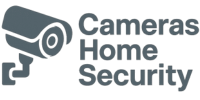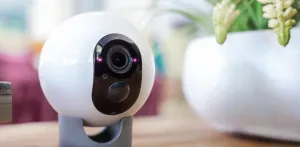Why Even Bother About Securing Your Home Security Cameras?
There’s something ironic about having to secure a security system, isn’t there? When I first dipped my toes into setting up a wireless home security camera network, my whole focus was on how these gadgets would keep my family and my home safe. In the excitement of unboxing those sleek, new cameras, the last thing on my mind was the idea that these devices could actually become the weak link in my home’s security.
It wasn’t until I had a chat with a friend who works in cybersecurity that a light bulb went off. Over cups of far-too-strong coffee—his brew could raise the dead—he illustrated how unsecured cameras could be like leaving your front door unlocked. Intruders might not just ignore these digital peepholes but could use them to peer into our lives. Creepy, right?
This conversation was the nudge I needed. Protecting your home doesn’t stop at installing cameras; you must secure them too. Don’t worry; I’m here to walk you through it, just like how my friend did for me.
Getting Started: Understanding Your Network
Before we dive into the nitty-gritty, let’s build a foundation. Every device that connects to the internet at your home forms part of your network. Imagine it as a spider-web of digital connections where your wireless security cameras are just one part. The strength and security of the whole web are essential, particularly those strands that hold sensitive nodes like your cameras.
Let’s break it down:
- Router: This is the heart of your home network. Think of it as the central station where all data travels through.
- Devices: These are the spokes attached to the central hub, including your cameras, smartphones, computers, and smart fridge if you have one.
- Internet: The gateway to the wider world and, unfortunately, the conduit through which potential threats can arrive.
A weak point in any of these can spell trouble, so securing each aspect is crucial.
Securing Your Router
It might not look it, but your router is a little fortress. If you keep the drawbridge up and the moat monsters well-fed, calamity stays out. Here’s how you make sure your router is less appealing to attackers:
- Change the default settings: Manufacturers often use simple default usernames and passwords, which are easy peasy for hackers to guess. Change these as soon as you set up your router.
- Update the firmware: Just like apps on your phone, router software needs updates. These patches help fix security vulnerabilities, keeping your network safe.
- Use strong encryption: Choose WPA3 encryption if it’s an option; this is currently the strongest level available for consumer devices.
- Disable features you don’t use: Features like Remote Management or WPS (Wi-Fi Protected Setup) can be convenient but also open doors for hackers. Turn them off if you don’t use them.
Camera-Specific Security Measures
Now to the main actors—your cameras. These tips are like personal bodyguards for your cameras. Here’s how to keep the sneaks out:
- Secure your wireless signal: Use a strong, unique password for your Wi-Fi network. It’s simple but incredibly effective.
- Regular updates: I can’t stress this enough. Always keep your camera’s firmware updated. Manufacturers often release patches that fix vulnerabilities that could be exploited.
- Enable two-factor authentication: This adds an extra layer of security by requiring a second form of verification to access your camera feeds, like a code sent to your phone.
- Use strong, unique passwords: Each camera should have its own complex password, ideally a mix of letters, numbers, and symbols.
Go the Extra Mile: Advanced Tips
If you want to really bolster your defenses, here are a few advanced tips that can put you ahead of the curve:
- Network segmentation: This is fancy talk for separating devices on different networks. Have one network for your everyday use and another for your security devices. This limits the chance of your cameras being compromised through other devices.
- VPN: A virtual private network (VPN) can encrypt the data transmitting from your cameras to your router, making it harder for hackers to snoop on your video feeds.
- Professional monitoring: If it’s in your budget, consider professional security monitoring. Not only will they keep an eye on your security, but they’re often the first to know and react to security issues and updates.
Lessons from the Front Line
Back when I was just starting out, I thought securing my home network meant just setting a Wi-Fi password and forgetting about it. Perilous, I know. The biggest lesson I’ve learned, and something I hope you take away too, is that security is never a one-and-done deal. It’s a continuous process that requires attention and adaptation.
Every update, every password change, and even those extra steps like segmentation and VPNs add up. They form layers and layers of security that protect not only your home but also your peace of mind. (consumer.ftc.gov)
If you’re just beginning this journey, it might also help to explore a comparison of top camera brands to choose more secure, reputable devices right from the start.
Remember: The safety of your home starts with the security of your network. Treat it with care, and let it do its job in keeping you safe.
Wish you all safety and security in your digital adventures at home!





